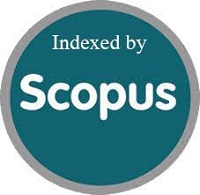Struktur Internal dan Validitas Konstruk dari Toronto Alexithymia Scale (TAS-20) dengan Sampel Mahasiswa pada Universitas di Jakarta
DOI:
https://doi.org/10.15408/jp3i.v9i1.15450Keywords:
internal structure, construction validity, TAS-20, general population, struktur internal, validitas konstrukAbstract
Abstract
Alexithymia is a situation of extreme activity in relation to emotions, they seem insensitive to the surrounding environment. Subjects with alexithymia tendencies have difficulty identifying, describing, and interpreting their own feelings. At this time there are 2 measuring devices that are already well known alexithymia in the world, namely: Bermond Vorst Alexithymia Quastionaire (BVAQ) and Toronto Alexithymia Scale (TAS-20). From the existing literature, the more widely used is TAS-20 which consists of 20 items, to measure three dimensions, namely Difficulty Identifying Feeling (DIF), Difficulty Describing Feeling (DDF) and Externally Oriented Thinking (EOT). This research re-examines whether the existing dimensions do represent measurements of alexithymia in accordance with its operational definition. The subject of this study was a sample of a normal adult population of 250 adults, taken using non-probability sampling techniques from four universities in Jakarta. The author finds that the three dimensions conceptualized in TAS-20 are somewhat blurred, and the EOT dimension tends to dominate. In testing with a one-factor model (unidimensional), even with the assumption that all items are parallel, it turns out to be compatible with the data. But only 16 of the 20 TAS-20 items meet this requirement. That is, for the sake of scoring it would be more appropriate if the three dimensions were considered to be absent, and the use of a score obtained from the sum of a score of each item could be justified. Some suggestions are given for the use of TAS-20 in Indonesia.
Abstrak
Alexithymia adalah situasi aktivitas ekstrim yang dalam kaitannya dengan emosi, mereka terlihat tidak peka terhadap lingkungan sekitar. Subjek dengan kecenderungan alexithymia mengalami kesulitan mengidentifikasi, mendeskripsikan, dan menginterpretasikan perasaannya sendiri. Pada saat ini ada 2 alat ukur alexithymia yang sudah cukup dikenal didunia yaitu: Bermond Vorst Alexithymia Quastionaire (BVAQ) dan Toronto Alexithymia Scale (TAS-20). Dari literatur yang ada, yang lebih banyak digunakan adalah TAS-20 yang terdiri dari 20 items, untuk mengukur tiga dimensi yaitu Difficulty Identifying Feeling (DIF), Difficulty Describing Feeling (DDF) dan Externally Oriented Thinking (EOT). Penelitian ini menguji kembali apakah dimensi yang ada itu memang mewakili pengukuran terhadap alexithymia sesuai dengan definisi operasionalnya. Subjek penelitian ini merupakan sampel dari populasi orang normal yang berusia dewasa awal berjumlah 250 orang, yang diambil menggunakan teknik non-probability sampling dari empat Univeritas di Jakarta. Penulis menemukan bahwadari tiga dimensi yang dikonsepkan pada TAS-20 agak kabur batasannya, dan dimensi EOT cenderung mendominasi. Pada pengujian dengan model satu faktor (unidimensional), bahkan dengan disertai asumsi bahwaseluruh item bersifat paralel, ternyata fit dengan data.Tetapi hanya 16 dari 20 item TAS-20 yang memenuhi syarat ini. Artinya, untuk kepentingan skoring akan lebih tepat jika tiga dimensi tersebut dianggap tidak ada, dan penggunaan sekor yang diperoleh dari penjumlahan sekor setiap item dapat dibenarkan. Beberapa saran diberikan bagi penggunaan TAS-20 di Indonesia.
References
Bagby, R. M., Parker, J. D., & Taylor, G. J. (1994). The twenty-item Toronto Alexithymia Scale—I. Item selection and cross-validation of the factor structure. Journal of psychosomatic research, 38(1), 23-32.
Bermond, B. and Vorst, H. C. (1998). `Validity and reliability of Bermond±Vorst Alexithymia Questionnaire', Manuscript in preparation. The Netherlands: University of Amsterdam.
De Muzan, M. (1974). Psychodynamic mechanisms in psychosomatic symptomformation. Journl of Psychotherapy and psychosomatics, 23(1-6), 103-110.
Fischer, A. R., & Good, G. E. (1997). Men and psychotherapy: An investigation of alexithymia, intimacy, and masculine gender roles. Journal ofPsychotherapy: Theory, Research, Practice, Training, 34(2), 160.
Joreskog, K.G. dan Sorbom, D. (1996). LISREL 8: Users Reference Guide. Chicago: Scientific Software International In.
Muthén, L.K. and Muthén, B.O. (2012). Mplus User’s Guide. Seventh Edition. Los Angeles, CA: Muthén & Muthén.
Krystal, H. (1979). Alexithymia and psychotherapy. American journal ofpsychotherapy, 33(1), 17-31.
Sifneos, P. E. (1973). The prevalence of ‘alexithymic’characteristics in psychosomatic patients. Psychotherapy and psychosomatics, 22(2-6), 255-262.
Taylor, G. J., Ryan, D., & Bagby, M. (1985). Toward the development of a new self-report alexithymia scale. Psychotherapy and psychosomatics, 44(4), 191-199.
Thompson, J. (2009). Emotionally Dumb: An Overview of Alexithymia. Australia: Soul Books.
Timoney, L. R., & Holder, M. D. (2013). Emotional processing deficits and happiness: Assessing the measurement, correlates, and well-being of people with alexithymia. US: Springer Science & Business Media.
Taylor, G. J., Bagby, R. M., & Parker, J. D. (1989). Disorders of affect regulation: Alexithymia in medical and psychiatric illness. UK: Cambridge University Press.
Hendryx, M. S., Haviland, M. G., & Shaw, D. G. (1991). Dimensions of alexithymia and their relationships to anxiety and depression. Journal of personality assessment, 56(2), 227 - 237.
Manninen, M., Therman, S., Suvisaari, J., Ebeling, H., Moilanen, I., Huttunen, M., & Joukamaa, M. (2011). Alexithymia is common among adolescents with severe disruptive behavior. Journal of nervous and mental disease, 199(7), 506-509.
Nemiah, J. C. (1976). Alexithymia: a view of the psychosomatic process. Modern trends in psychosomatic medicine, 3, 430-439.



